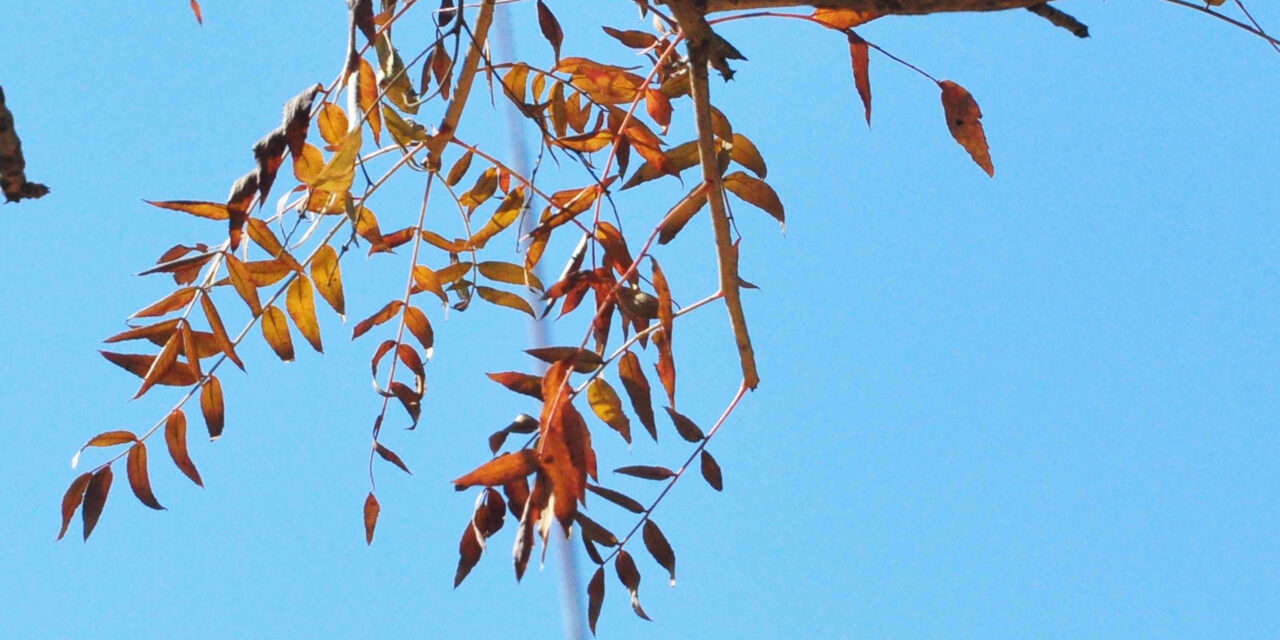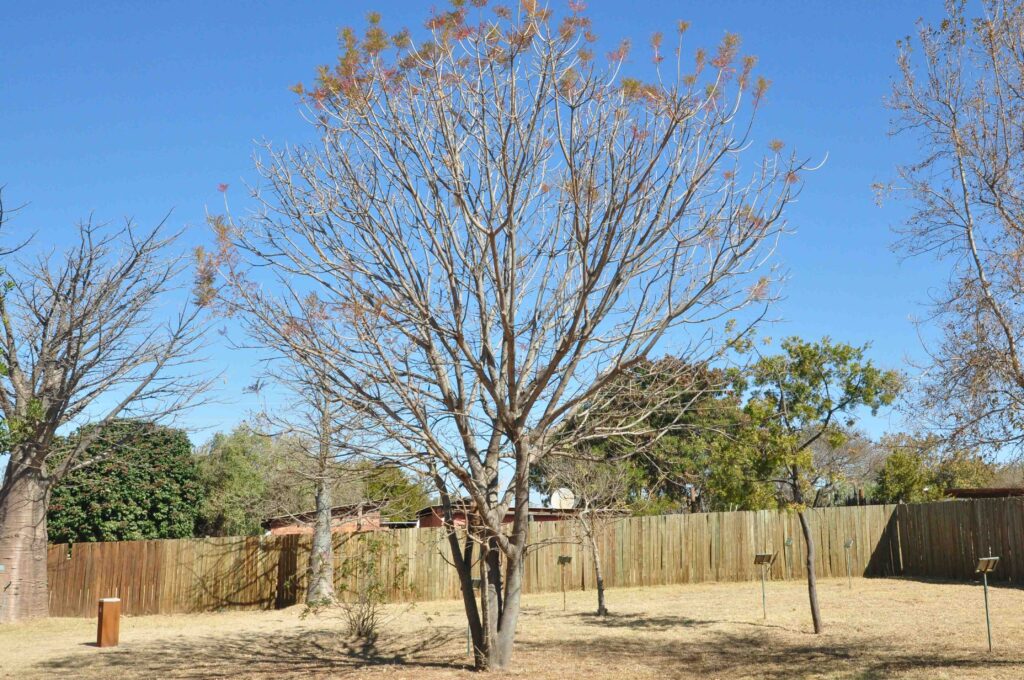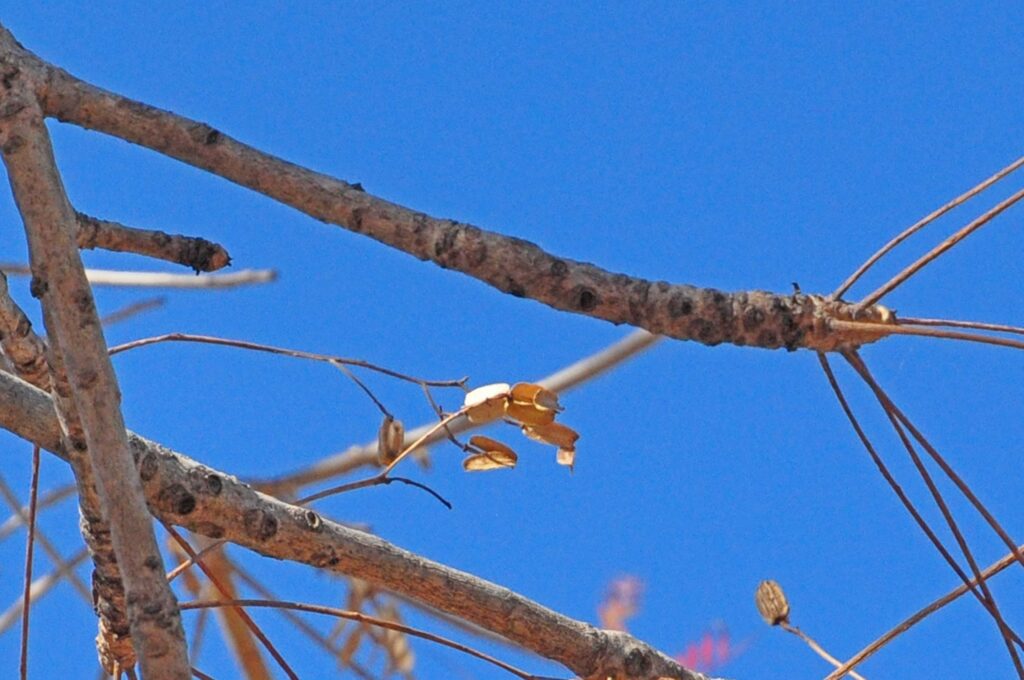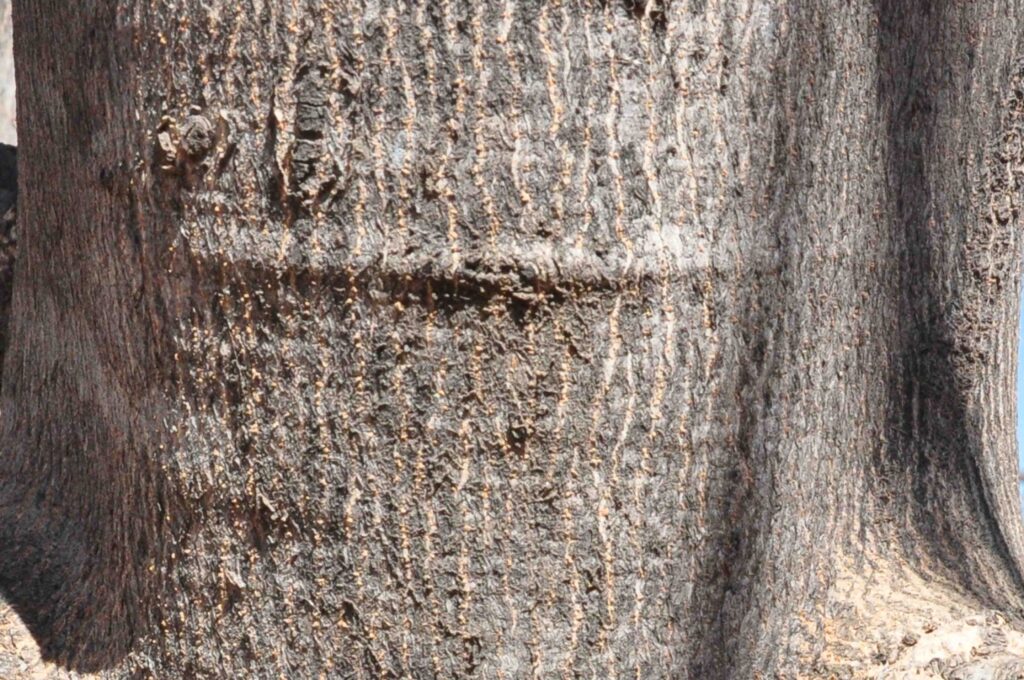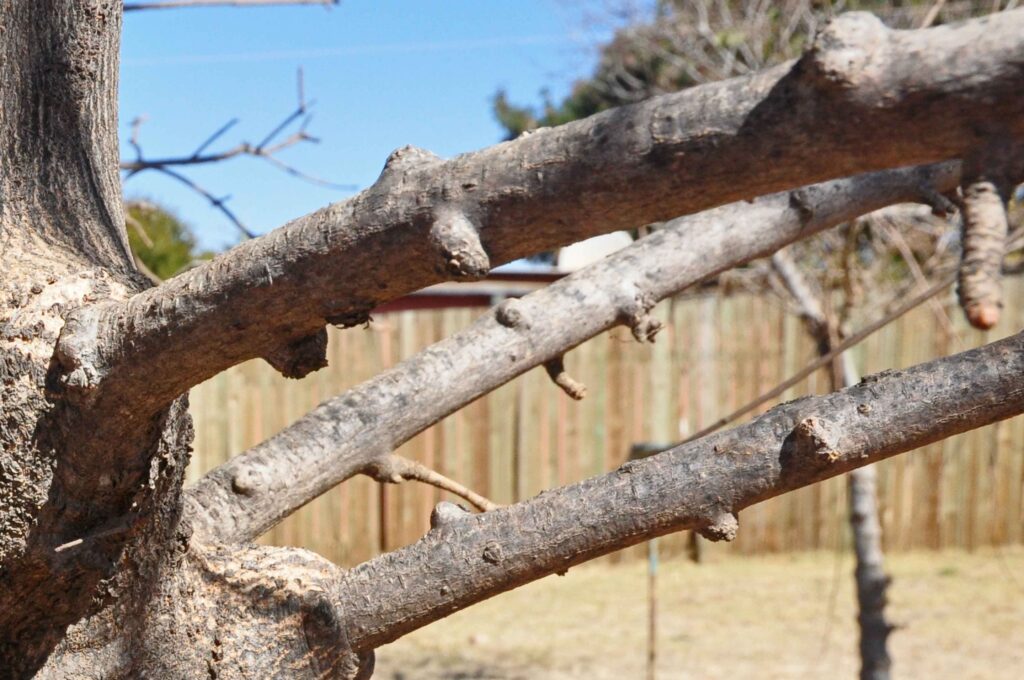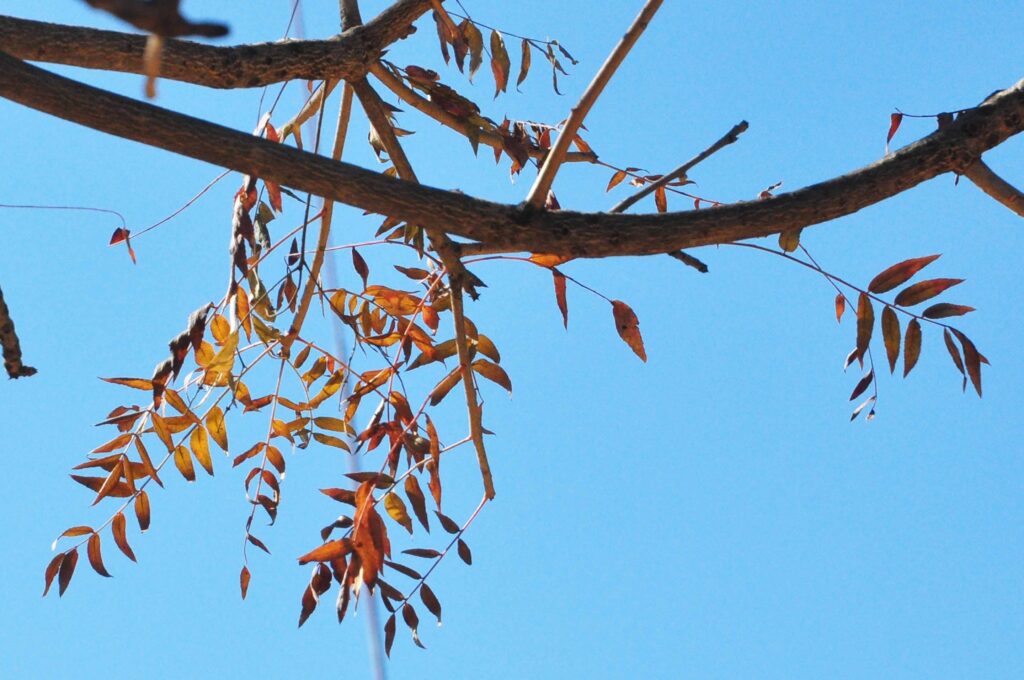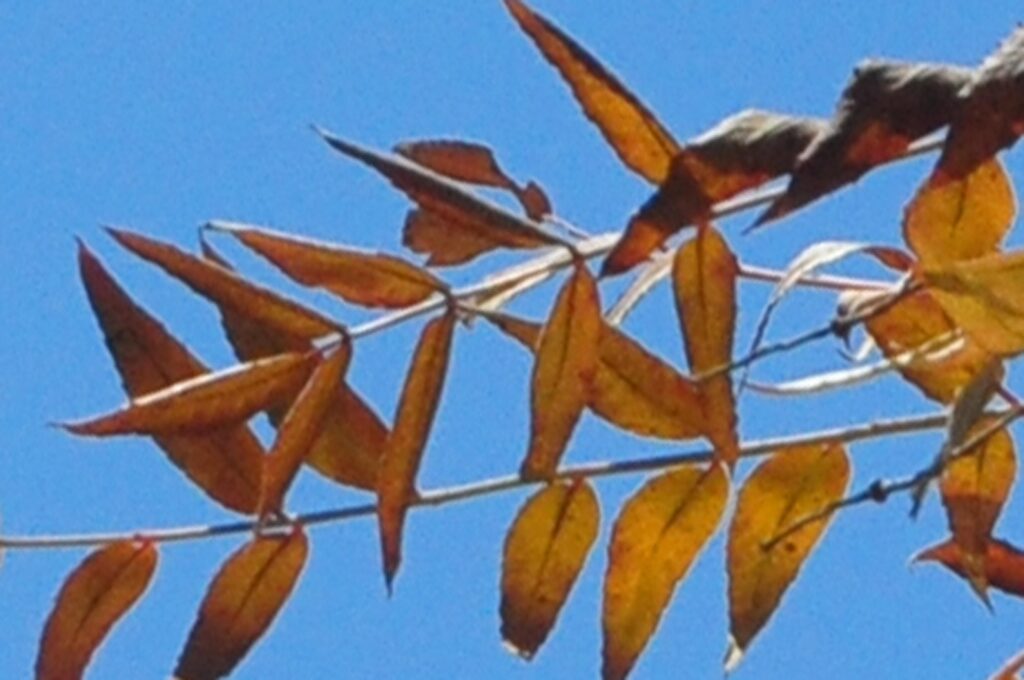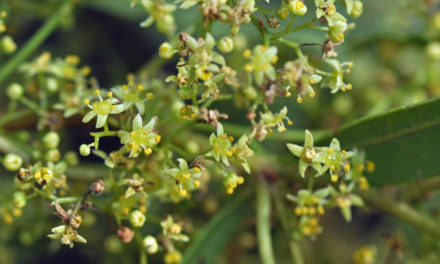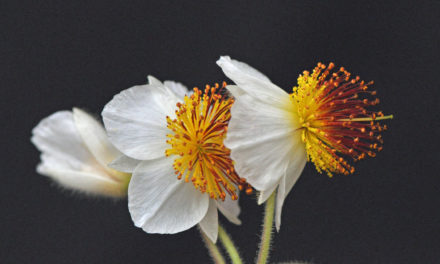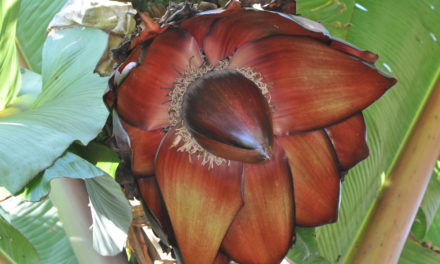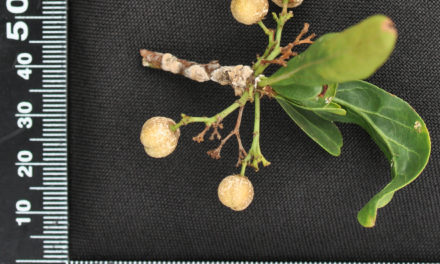General Info – summary
This candelabra shaped attractive monoecious Tree with its straight trunk and blunt ending flexible branches, is up to 19m high with a diameter to 0,8m. The imparipinnate acuminate and deciduous Leaves are spectacular in autumn. Staminodes are present in the small 4-merous unisexual cream or yellowish Flowers. The light brown, thinly woody, sharply 4 angled persistent Fruit is a capsule.
Description
Kirkia acuminata
Previous Names: Kirkia pubescens, Kirkia acuminata var. pubescens.
SA Tree No. 267.
Common names: (Afr) Witsering. (Eng) Common Kirkia, White seringa, White syringe, White Kirkia. (Northern Sotho) Modumela. (Setswana) Modumela, Mvumayila. (Tshivenda) Mubvumela.
Family: Kirkiaceae. This family has 1 genus and 3 species in southern Africa and 1 genus in Madagascar. Leaves are often near branch ends and all lack stipules. Individual leaves are usually opposite, compound and imparipinnate with many pairs of opposite Leaflets. The trees are unarmed. Flowers occur in paniculate, bracteate cymes. Individual flowers are regular and usually unisexual. Although the tree is monoecious (having both male and female reproductive organs on the same plant), only 1 sex appears at a time. The Calyx has 4, more or less free Sepals. There are 4 free imbricate Petals and usually 4 Stamens in Male Flowers and these are reduced to staminodes in Female Flowers. Here the superior ovary (reduced in male flowers) has 4 locules, each with 1 ovule. 4 fused styles end in a capitate stigma. The woody Fruit is clearly 4-angled, dry and splits longitudinally. Seeds are triangular in cross section and have little or no endosperm (the starch and oil-containing tissue of many seeds; often referred to as the albumen).
Name derivation: Kirkia – after an explorer who also visited the southern Africa – the Scotsman Captain (Sir) John Kirk (1832-1922). He was highly regarded as a botanist and was a valued member of David Livingstone’s Zambesi expedition of 1858-1863. acuminata – acuminate – said of an acute apex whose sides are somewhat concave and taper to a protracted point. This refers to the leaves.
Conservation Status: L C. Least Concern. 2009 (Raimondo, D., von Staden, L., Foden, W., Victor, J.E., Helme, N.A., Turner, R.C., Kamundi, D.A. and Manyama).
Tree
This Tree (photo 109) usually has a single straight, grey trunk that may be smooth or rough. It may reach 19m high with a trunk diameter up to 0,8m. The grey bark varies from smooth when young (phot0 110) to rough with deep grooves. Pale grey branching may occur near the base. Young flexible branches have circular or oval leaf scars that are clearly visible. Smooth branches tend to grow upwards and may be studded with dark corky knobs (photo 110). Branches are blunt-tipped (photo 120 under Leaves). Older grey stems may have a corky flaking bark with grooves more than 2cm deep.
- 109. 2021/07/17. Bella Bella. Photo: John Becking.
- 117R. 2021/07/19. Bella Bella. Photo: John Becking.
- 110R. 2021/07/17. Bella Bella. Photo: John Becking.
- 110. 2021/07/17. Bella Bella. Photo: John Becking.
Leaves
The pale green Leaves are imparipinnate (pinnately compound leaf ending in a single leaflet). Young leaves develop late in spring and may initially be sticky. Leaves lack Stipules (basal appendage of the petiole) and mature leaves are up to 45cm long. They develop at the ends of bluntly tipped branches (photo 120). Each leaf has 6 to 10 pairs of narrowly ovate, opposite or alternate Leaflets and the single terminal one. Leaflets are up to 7 x 2,5cm and have long sturdy midribs. The Apex is acuminate (said of an acute apex whose sides are somewhat concave and taper to a protracted point). The Base is tapering to rounded. The Margins are scalloped to finely toothed. The plumb-coloured Petiole (leaf stalk) is up to 10cm long and the Petiolules are very short or absent. On this early deciduous tree, the leaves turn red and golden in autumn (photo 120).
- 120. 2021/07/17. Bella Bella. Photo: John Becking.
- 120X. 2021/07/17. Bella Bella. Photo: John Becking.
Flowers
The tree is monoecious (having both male and female reproductive organs on the same plant). Individual Flowers are small – about 7mm wide and appear in leaf axils with the new leaves. Flowers have noticeably long Pedicels (stalk of a single flower). Both male and female flowers are separate but and occur collectively in cymes (a broad, more or less flat-topped, determinate flower cluster, with central flowers opening first). The Calyx has 4 Sepals and the Corolla has 4 free cream or greenish, lanceolate Petals that are imbricate (having regularly arranged, overlapping edges, as roof tiles). In Male Flowers, the ovary is reduced and the style is absent. Alternating with the petals are 4 Stamens which arise on the outside of the disc (a more or less fleshy or elevated development of the receptacle). The Anthers are free from both the Corolla and other anthers. Present in the Female Flowers are Staminodes (sterile stamens). Here the superior Ovary is 4 locular, 4 lobed and is partly immersed in the annular or swollen disc. The Style is slim and ends in a capitate (formed like a head) Stigma. Each locule has a single Ovule. (Sep-Dec).
Fruit
The light brown, thinly woody, sharply 4 angled persistent Fruit (photo 117) is a Capsule (a dry fruit resulting from the maturing of a compound ovary which usually opens at maturity by one or more lines of dehiscence). It is up to 2 x 1cm and splits into 4 parts on dehiscence but remain joined at the apex by a strip of tissue. A single Seed, which is triangular in cross section, is contained in each part. Capsules may remain on the tree for a year. (Jan-May).
Distribution & Ecology
This is a tree of the bushveld and lowveld. It may be seen on rocky hills – typically on northern slopes or in deep sandy soil – especially the red sandy soil. These trees tend to tower over the surrounding bush. They grow at medium to low altitudes. In South Africa, the best sightings are north of the Soutpansberg. This mountain range runs for about 100km roughly east west in Northern Limpopo Province. The tree is often co-resident with mopane trees. In South Africa, it occurs in Mpumalanga and Limpopo. These trees are also found in Mozambique, Northern Botswana, Zimbabwe e.g. in mopane land, and Namibia e.g. close to Etosha National Park, Southern Angola, and into tropical Africa. It also is found in Madagascar.
Ethnobotany
This Tree is often planted as a live fence. Wood has a relatively low density – from 580 – 720 kg per cubic metre at a 12% water content, but is not very durable. It has a narrow heartwood that is dark coppery or greenish brown with dark wavy margins. The sapwood is whitish to light grey. Due to its high silica content, the wood is difficult to cut, however attractive furniture can be made from it. It planes and turns well. It can also be used for parquet flooring and for making spoons, dishes, bowls, cups and hoops. The wood is also used for fuel and for making charcoal. The swollen Roots store thirst quenching liquid that can be used in times of a water shortage. Leaves and nutritious Seeds are browsed by stock. The leaves are impressive in spring and autumn. The young tree is frost sensitive and does best in a warm climate. The trees are fast growing from both seeds and truncheons. They are drought resistant. The fine, rounded leafy crown makes this an attractive tree that provides deep shade in summer. In parts of Zimbabwe this tree is regarded as sacred.
References
Coates Palgrave, M. 2002. Keith Coates Palgrave Trees of Southern Africa, edn 3. Struik, Cape Town.
Burrows, J.E., Burrows, S.M., Lotter, M.C. & Schmidt, E. 2018. Trees and Shrubs Mozambique. Publishing Print Matters (Pty) Ltd. Noordhoek, Cape Town.
Foden, W. & Potter, L. 2005. Kirkia acuminata Oliv. National Assessment: Red List of South African Plants version 2020.1. Accessed on 2023/08/07.
Palmer, E. & Pitman, N. 1972. Trees of southern Africa, Balkema, Amsterdam, Cape Town.
Schmidt, S. Lotter, M. & McCleland, W. 2002. Trees and Shrubs of Mpumalanga and the Kruger National Park.
van Wyk, B. & van Wyk, P. 1997 Field guide to Trees of Southern Africa, Struik, Cape Town.
http://redlist.sanbi.org/species.php?species=3970-1
http://posa.sanbi.org/flora/browse.php?src=SP
http://pza.sanbi.org/kirkia-acuminata
https://www.zimbabweflora.co.zw/speciesdata/species.php?species_id=133250
http://tropical.theferns.info/viewtropical.php?id=Kirkia+acuminata
https://www.prota4u.org/database/protav8.asp?g=pe&p=Kirkia+acuminata+Oliv.

